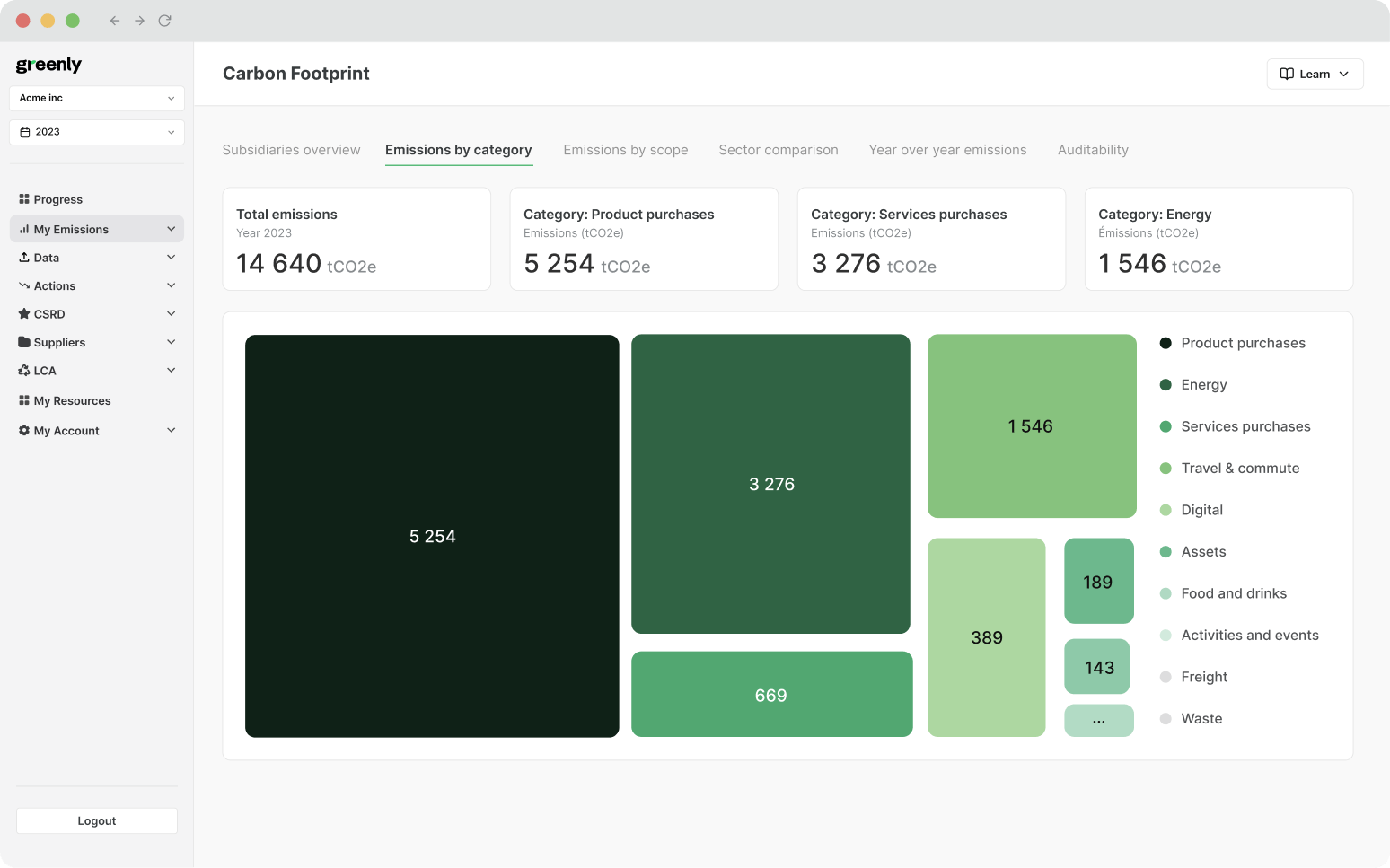
What are the 3 Pillars of Corporate Sustainability?
In this article, we'll explore what the 3 pillars of corporate responsibility are, why they're important, and how businesses can turn them into practical action.
ESG / CSR
Industries
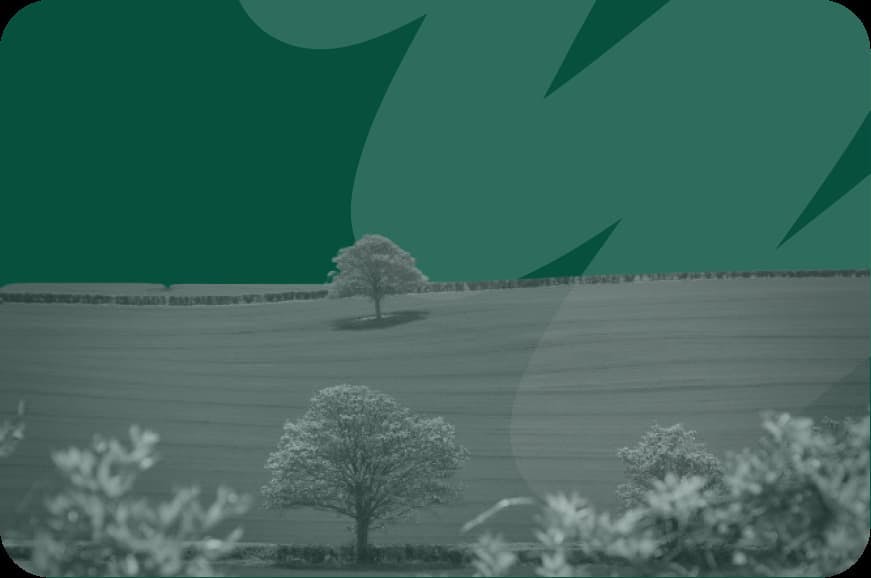


Industrialisation, urbanisation, and the increased need for agricultural lands have all contributed to deforestation and in turn – created REDD+.
💡 Protecting our world's forests is essentially not only for reducing emissions from deforestation and to develop a more sustainable management of forests, but as it can help companies to offset emissions they can't reduce on their own and allow for various environmental benefits – such as improved air quality.
REDD+ can assist developing country parties to the UNFCCC to gain access via the Green Climate Fund (GCF) readiness program, and in turn – help to reduce the environmental impact caused by deforestation and general forest degradation. This allows for further capacity building, improved national policies, and allows nations to adhere to the Paris Agreement with ease.
Is REDD+ ultimately successful at improving the environment and the forests, wildlife, reduce deforestation and ecosystems that it seeks to protect?
In this article, we’ll review what REDD+ is, how it helps the environment, and how REDD+ can help businesses in the midst of climate change.
REDD+ is a strategy originally created by the UNFCCC and the Conference of the Parties to recommend projects in the forest sector to reduce the carbon dioxide emissions created from deforestation and forest degradation.
💡 In addition to this, REDD+ allows nations to protect vulnerable forest communities, indigenous communities, indigenous peoples land rights, adhere to political commitments, and improve their overall sustainable management of forests – all while halting deforestation.
The Conference of Parties, more commonly referred to as COP – is an annual meeting where global leaders gather to negotiate ways to mitigate change and various climate challenge issues that are a cause for concern around the world.
The goal of the Conference of Parties is to address issues about climate change amongst members of the United Nations Framework Convention on Climate Change, or the UNFCCC – so that they have the information to create the necessary actions to reduce climate change.
👉 This correlates to one of the main goals of REDD+, which is to contribute to the global fight against climate change.
REDD+ also strives to develop more sustainable management for forest conservation, forest improvement, and reforestation in developing countries. REDD+ is dedicated to establishing these activities through the use of national governments in order to lower the detrimental impact on forests caused by various human activities.
👉 The main goal of REDD+ to encourage developing countries to establish better management tactics to carefully consider the resources provided to them by their forests, and to ultimately aid in the collective fight against climate change.

There is a difference between reforestation, forest degradation, and deforestation, and it is important to understand the difference in order to understand the objectives of REDD+.
👉 Did you know that reforestation is a method of reducing carbon dioxide emissions, as trees absorb carbon dioxide from the atmosphere?
Deforestation, on the other hand – is the term used to describe the continued destruction of forests around the world. These natural forests are removed by mankind for industrial, agricultural, or urbanisation purposes despite these lands remaining vital to our ecosystems.
Forest degradation is similar to deforestation – but isn’t quite the same. Unlike deforestation, where the forest land is completely destroyed – forest degradation is when a forest and the wildlife in the ecosystem is compromised, but the forest land isn’t eradicated entirely.
Despite the short-term gain that deforestation can offer for industrialisation or urbanisation – deforestation is ultimately harmful for life on Earth as it contributes to climate change.
👉 Did you know that deforestation and forest degradation account for nearly 15% of global greenhouse gas emissions?
REDD+ seeks to improve the poor effects caused by deforestation and various projects that have harmed other forests impacted by human activities.
The table below will further clarify the differences between reforestation, deforestation and forest degradation:
| Term | Description | Environmental Impact |
|---|---|---|
| Reforestation | Reforestation refers to the process of planting trees in areas where forests have been previously cut or destroyed. | Helps restore ecosystems, improves carbon sequestration, and contributes to biodiversity. It mitigates climate change by absorbing CO2. |
| Deforestation | Deforestation is the clearing or removal of forests to make land available for agriculture, urbanisation, or other purposes. | Leads to loss of biodiversity, disrupts water cycles, increases soil erosion, and contributes significantly to greenhouse gas emissions. |
| Forest Degradation | Forest degradation occurs when forests are damaged or degraded, often due to unsustainable logging, mining, or agriculture, without full removal of trees. | Reduces the forest's capacity to provide ecosystem services such as carbon storage, habitat for wildlife, and water regulation. |
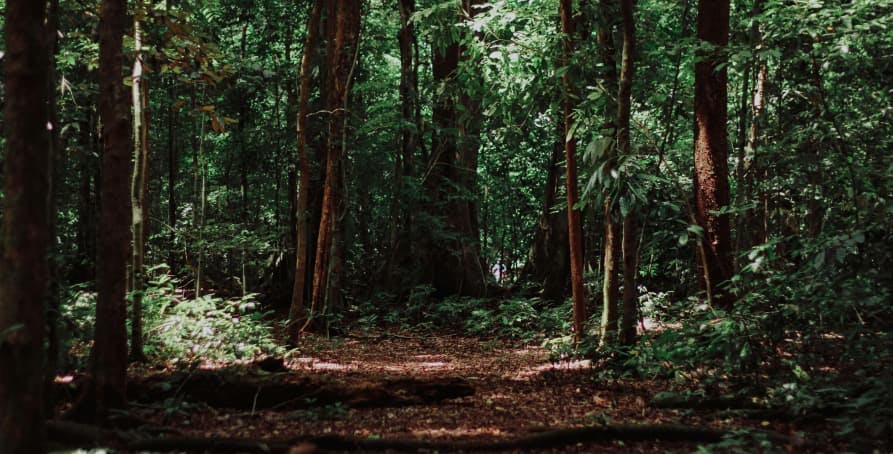
Deforestation has multiple negative effects on the environment.
For instance, deforestation leads to soil erosion, which creates insufficient food production and ultimately forces the wildlife in those deforested areas to flee their natural habitats. Deforestation and forest degradation impacts animal species, plants, and flowers that are all essential to cultivating a healthy ecosystem necessary to provide the resources for a healthy human life.
👉 Some ways to prevent the need for deforestation in the first place include eating less meat, consuming less overall to decrease the need for supply, and lower the use of fossil fuels or palm oils that contribute to greenhouse gas emissions and global warming.
While small efforts like the ones listed above are great, a long-term plan that aims to reduce the effects of forest degradation and deforestation will ultimately be more impactful and efficacious at mitigating the consequences that deforestation projects have on climate change.
💡 This is precisely where REDD+ can help countries to better understand voluntary carbon markets, carbon credits, offset emissions, and aid in overall enhancement of forest carbon management.

In order to begin the process of creating a REDD+ strategy plan, a country must first comply with the four core values of REDD+.
The four core values of REDD+ are as follows:
👉 Applicants for the REDD+ program should illustrate how their efforts to reduce carbon emissions from deforestation and forest degradation are in line with the Paris Climate Agreement.
Countries applying for REDD+ should then produce an estimated calculation of their emissions reductions so that the data can be reported to the REDD+ information hub. A secretary from the UNFCCC will review the documentation provided by each applying country to make sure all the requirements for REDD+ have been met for approval.
One way that countries will try to reduce their carbon emissions is through carbon offsetting, such as reforestation projects to attempt to rebuild the forest, local community, and ecosystem that was destroyed through deforestation and forest degradation.
👉 REDD+ encourages nations to develop sustainable management plans for their forests, including developing countries. Therefore, REDD+ seeks to improve both the biodiversity of a forest and the local community or country that it belongs to – all whale reducing greenhouse gas emissions that contribute to climate change.
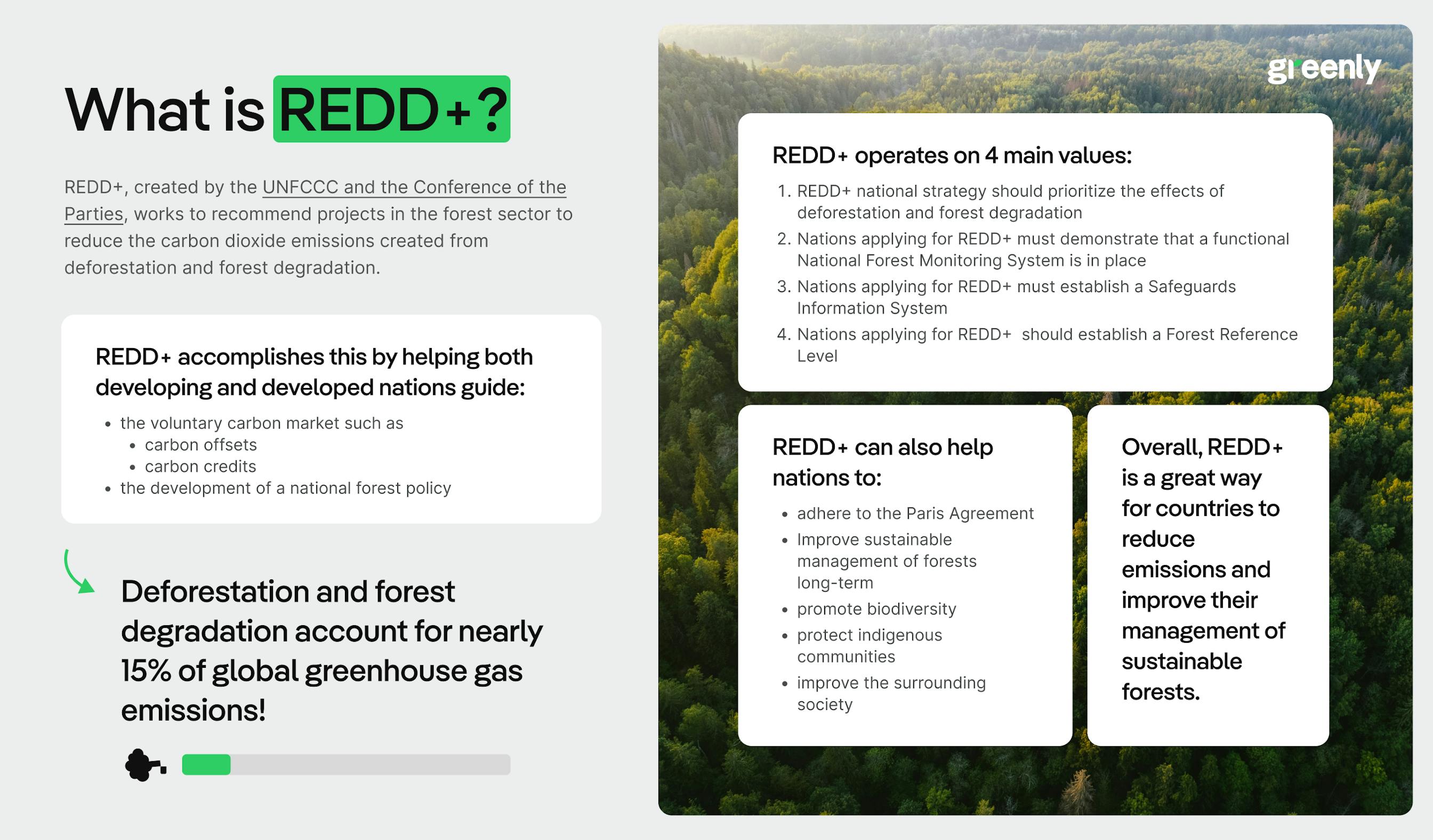


In August 2024, REDD+ released a semi-annual progress report sharing how they are on track to meet several of their goals and nationally determined contributions and and continue to help develop national strategies to sustainably manage forests for both developing and developed countries – but some goals remain delayed, such as their efforts to reduce emissions with Argentina, Bolivia, and Columbia as national circumstances have hindered their current plans.
💡 In 2024, developing countries around the world have drastically increased the need for overseeing forest activity, and ultimately support the overall missions of REDD+ – as it remains vital in attempts to protect forests and create long-term forest sustainable management for reducing emissions from deforestation, sustainable management, to achieve sustainable development goals (SDGs), climate change mitigation, and to reduce global emissions via stored carbon.
Since the start of 2020, fifty developing countries have requested a forest reference from REDD+ for a forest reference emission to be sent to the UNFCCC. In addition, fifteen countries have asked for summarised guidance on how to preserve their forests, with twelve of the fifteen having submitted new national plans to protect their forests.
As of 2024, REDD+ remains on track to help Laos work towards their interest in voluntary forest carbon projects, assist Kenya in forest protection and enhance forest carbon stocks, worked with DRC to curate improved capacity building support, and completed the second monitoring report for the Forest Carbon Partnership Facility for Ghana to allow them to receive results based payments for their emission reductions from the FCPF Carbon Fund.
👉 In short, REDD+ is not operating at full speed or capacity like it could – but it is well on its way and the development of REDD+ has not been ignored amidst the climate change crisis.
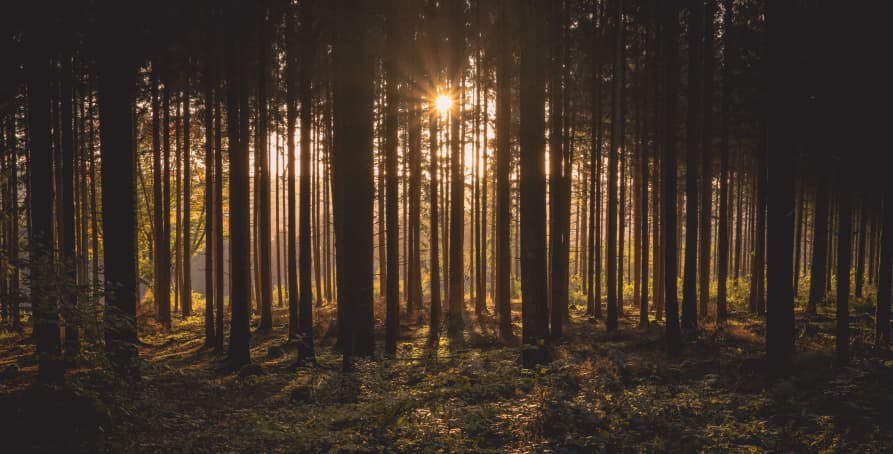
REDD+ has a lot of benefits, but like everything else in life – it isn’t foolproof, nor is it perfect.
The pros of REDD+ include how:
👉 However, despite the pros – the cons of REDD+ are just as abundant and important to note as the pros of REDD+.
The cons of REDD+ are that there is no unified definition of what can be called a forest or what sustainable forest management means. This doesn’t allow for a collective data of forest progress as no concrete or standardised measurements towards sustainable forest management can be taken.
Also, ownership of the forests of the world aren’t clear – as diverse legal systems often remain in charge of these forests. This makes it difficult to outlaw or define when a local community is considered a resident of a forest land, and makes it hard to prevent forest degradation or deforestation. These legal systems will often not seek to protect the people who live in the forests for this reason.
REDD+ does not have a proper plan or even an outlined method of how to be financed. If REDD+ cannot be properly financed, then REDD+ cannot help to establish better forest management or ultimately aid in the fight against climate change.
The cost to upkeep REDD+ is expected to increase, and it will continue to fluctuate depending on the world’s need for better forest management and as climate change continues to persevere as a global predicament.
👉 Therefore, the management of REDD+ is also expected to become more difficult, and will require extra time and effort to monitor and adjust the REDD+ program.
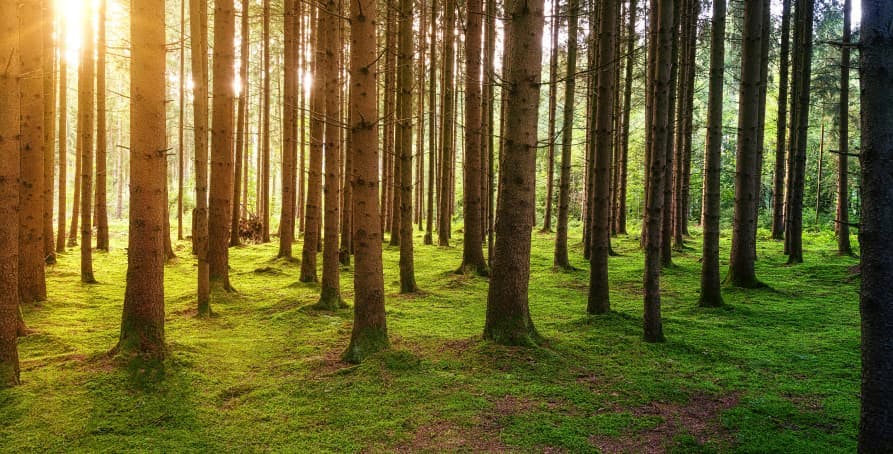
REDD+ doesn’t only prevent climate change, but it also decreases the chances of deforestation and forest degradation.
Ultimately, yes – REDD+ is great for the environment!
If reading this article about REDD+, deforestation, and reforestation has made you interested in reducing your carbon emission to further fight against climate change – Greenly can help you!
Making an effort to switch your company over to the values of a green business can be overwhelming, but don’t worry – Greenly is here to help. Click here to schedule a demo to see how Greenly can help you find ways to improve energy efficiency and decrease the dependency on fossil fuels in your own company.
Greenly can help you make an environmental change for the better, starting with a carbon footprint assessment to know how much carbon emissions your company produces.
Click here to learn more about Greenly and how we can help you reduce your carbon footprint
